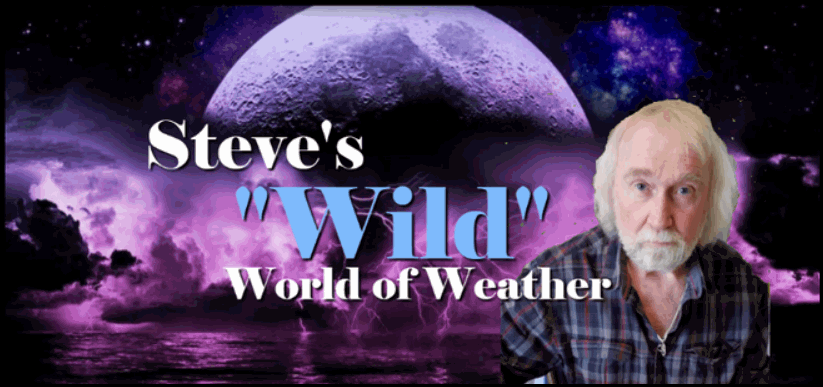WOOLLY BEARS AND WASPS, THE 2021 WINTER BASED ON FOLKLORE...
Making a winter forecast is difficult in a couple of ways. First and foremost, just as with any forecast, you need to accurately read and interpret the signs. That could be global sea surface temperatures, influences from the southern oscillation (La Nina/El Nino), model projections of blocks and storm tracks, analogs, and well you get the idea. The other big challenge is the fact that a seasonal forecast is issued months before the outcome is known. Models have a tough time picking up trends beyond 10 days let along 3-4 months.
If you grasp the difficulties we face today, imagine the challenges the native Americans and early settlers faced centuries ago. Way before computers and the invention of the barometer, they relied on observations made of human experience that in some cases have been handed down for generations. Many of these adages, known as folklore had merit and were soundly based on wind and pressure. However, just as many led to conclusions that were far from accurate and struggled to survive time.

Steve Gottschalk, an old friend of mine (and a weekly contributor to this page with Steve's "wild" world of weather) is a collector of weather folklore. He has spent a lifetime testing and documenting the theories. I asked him if he would give me some thoughts on the winter ahead based strictly on the folklore he finds outside his door. He graciously obliged and here's what he's seen and discerned.....
Since I started going public with my winter forecasts back in 1995 with the Quad City Times columnist Bill Wundram, the woolly bear caterpillars have been right 70% of the time with forecasting the temperatures. This year I haven't enough reports to make a prediction yet. The 2 critters that were found were both showing a colder winter.

I have been using the spiders since 2009 to forecast the winter temperatures and they have been correct 65% of the time. This season there are more than usual so I am predicting below normal temperatures.
I started using the crickets to predict the snowfall back in 1995 and they have been right about 70% of the time. They are more numerous this season so I will predict above normal snowfall for the winter.

This will be my third year for using the paper wasps to determine the snowfall. Their numbers are greater this year so we should see above normal snowfall.

The weeds are quite a bit taller this season so that's another sign of more snow than usual.
The squirrels have been very busy this season with burying the walnuts which indicates a colder winter 65% of the time.
You will notice that none of the folklore he mentioned has more than a 70 percent success rate. That's far from perfect but when you consider they represent a seasonal forecast that's better than a flip of a coin. If Steve is reading the signs right (he usually does) and the folklore is accurate, our winter should be both colder and snowier than usual.
Just for kicks, I added one of my own that's always reliable. Whether it's cold or whether it's hot; We shall have weather, whether or not. Thanks Steve and may the folklore be with you!
To the weather at hand, the next two days look straight forward with excellent model consistency. Friday starts cold with readings near the freezing mark. Later in the day under increasing clouds highs should settle in near the mid 50s.
Saturday another cold front approaches from the north and brings a nice push of southerly winds that should send highs into the range of 65-70 with a mix of sun and clouds.
Late Saturday night the front arrives and with it comes a strong surge of cold air that will keep highs in the 40s on Sunday. Brisk winds will make it feel even colder with wind chills in the 30s much of the day. Below you can see the projected daytime highs and afternoon wind chills.


The other issue which will make the day poor will be showers in the morning. These will be light, generally 1/4" or less. This is also where we have a significant issue between models. The thermal profiles on the GFS are colder and it changes the rain to snow soon enough for some minor accumulations on grassy and elevated surfaces. Here's what it has for accumulations.

The EURO keeps it predominately a rain event and shows this for snow totals.

My feeling is that most of the precipitation will be over before critical thickness levels necessary for snow are attained. Thus, the worst case scenario would be a brief rain/snow mix or quick burst of light snow before the rain ends-no accumulation. I doubt we get more than a mix (if that) so I'm throwing the GFS out. We'll see if Friday's data sheds any new light on the situation.
With that, I sign off and wish you a darn good Friday. Roll weather...TS









